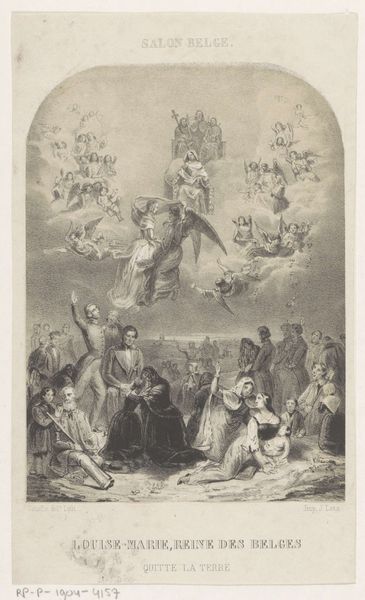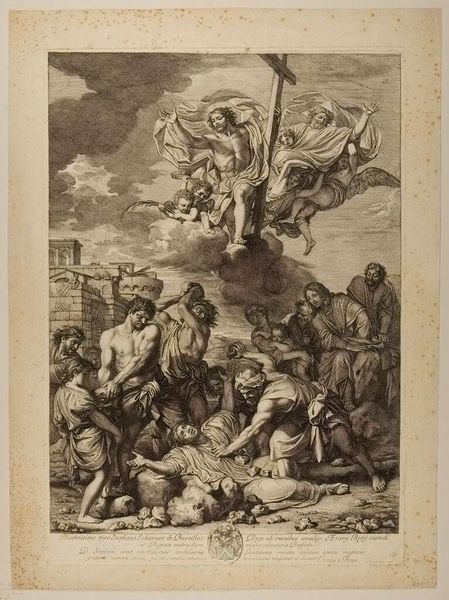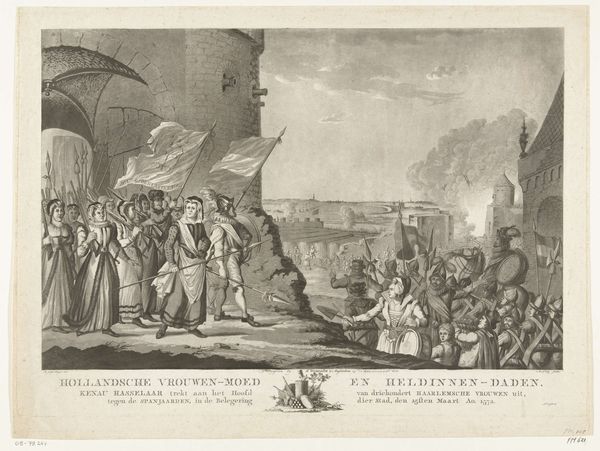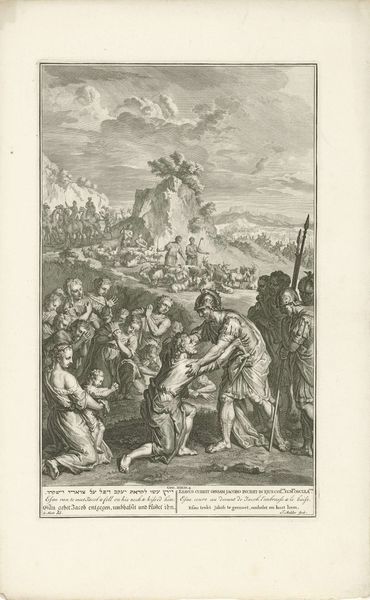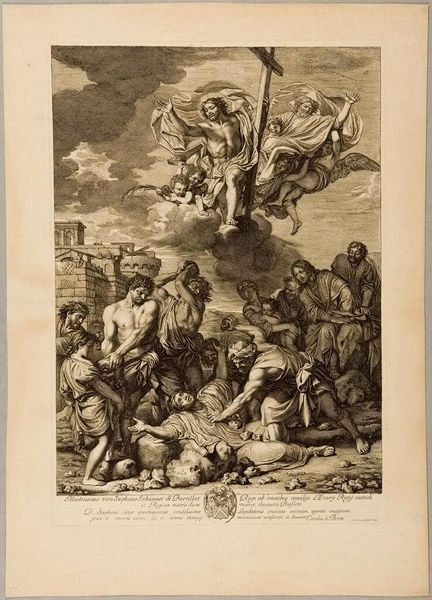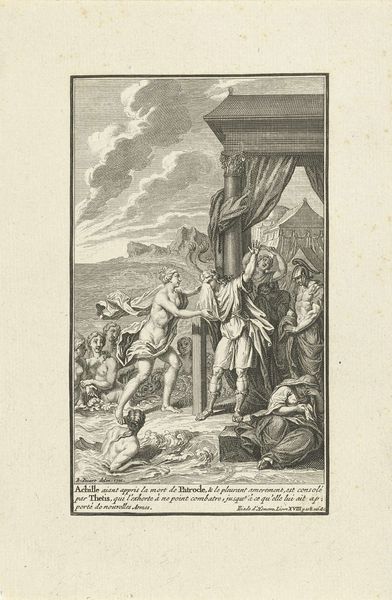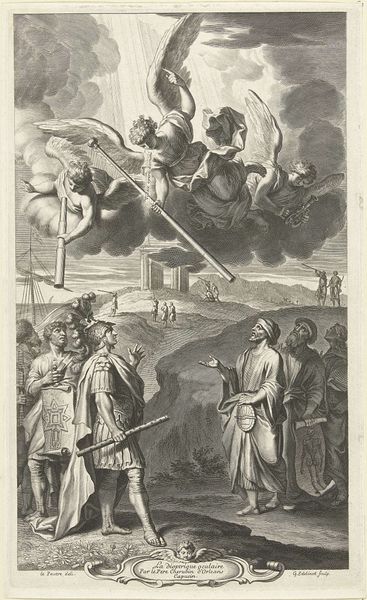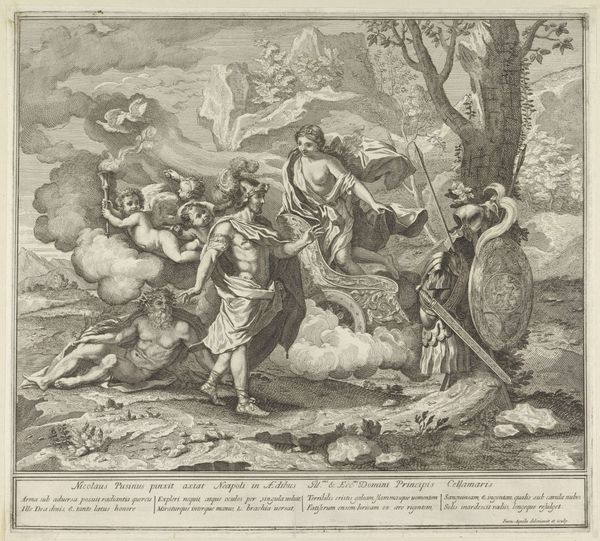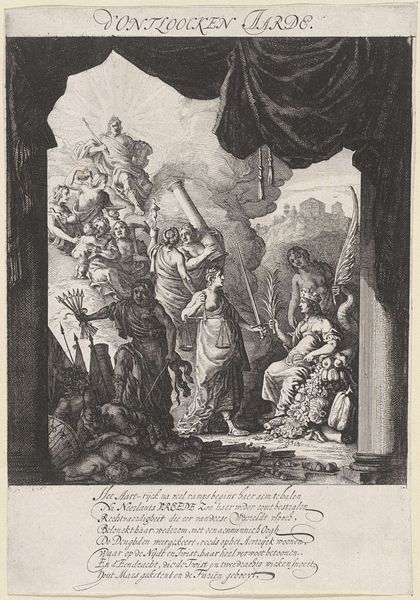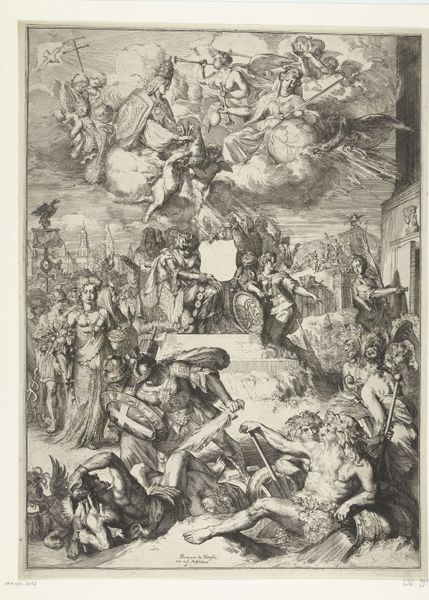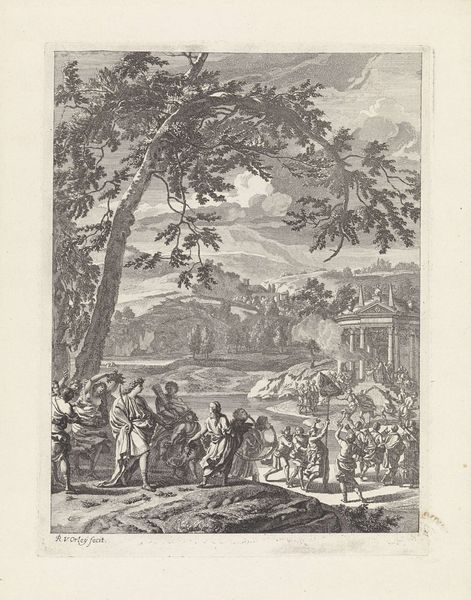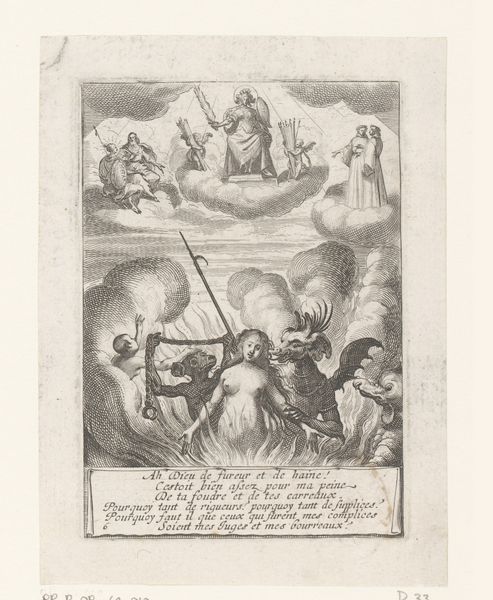
Vreugde over de Vrede geslooten tusschen de Bataafsche Republiek en Engeland, te Amiens den 27 Maart Ao. 1802 1802
0:00
0:00
engraving
#
neoclacissism
#
allegory
#
old engraving style
#
group-portraits
#
history-painting
#
engraving
Dimensions: height 662 mm, width 536 mm
Copyright: Rijks Museum: Open Domain
Curator: Look at this engraving, made in 1802 by Jacob Ernst Marcus, it is titled "Vreugde over de Vrede geslooten tusschen de Bataafsche Republiek en Engeland, te Amiens den 27 Maart Ao. 1802", celebrating the peace treaty between the Batavian Republic and England. Editor: It’s a whirlwind of celebration and symbolism! The chaos and ecstasy in the figures below starkly contrast with the serenity of the allegorical figures above. The tonal range is very balanced between the deep, saturated values and lighter areas, providing the viewer a visual treat in how they contrast. Curator: Precisely, we see the allegorical figures of the Batavian Republic and England, embracing atop a pedestal, beneath a garland-draped flag. Below them, ordinary people revel, while putti and a fallen devil fill the sky above. Note the engraving's reliance on line and texture to create form. Editor: I see so much visual encoding here. The putti and the devil signify the divine endorsement of the peace, and the expulsion of discord, very obvious through their positioning in the sky. The embracing figures on the pedestal act as visual symbols representing the alliance, draped with garland that underscores prosperity, concord and alliance through the symbolism of flowers. Curator: And observe the multitude of people below—they are rendered with unique gestures and expressions that suggest widespread elation, though the engraving style leans heavily on established Neoclassical forms. I also want to draw your attention to how they use the pedestal as an organizing principle in its construction, and creating two distinct sections with figures above and below, separated by the coldness and monumentality of its flat stone surfaces. Editor: Right, the ordinary people inject that relatable humanity into what could have otherwise been a rather sterile, classical allegory. The expressions and implied movement adds emotional complexity, conveying both joy and a sense of hope now that peace has been achieved. Note that the artist has purposefully constructed the characters such that they evoke these human feelings, through gesturing with hands or bodies leaning on each other, adding dynamism and variety of body language that engages the audience. Curator: Yes, it is this intersection of formal artistic style and its historical context that allows it to function beyond a mere representation of the era. The artist used line and visual composition, for a celebration of harmony on the societal and individual level. Editor: And ultimately it is these images, of people and of symbols, that weave a rich narrative of hope, unity, and the enduring human longing for peace, inviting to examine layers of cultural memory embedded in this print.
Comments
No comments
Be the first to comment and join the conversation on the ultimate creative platform.
